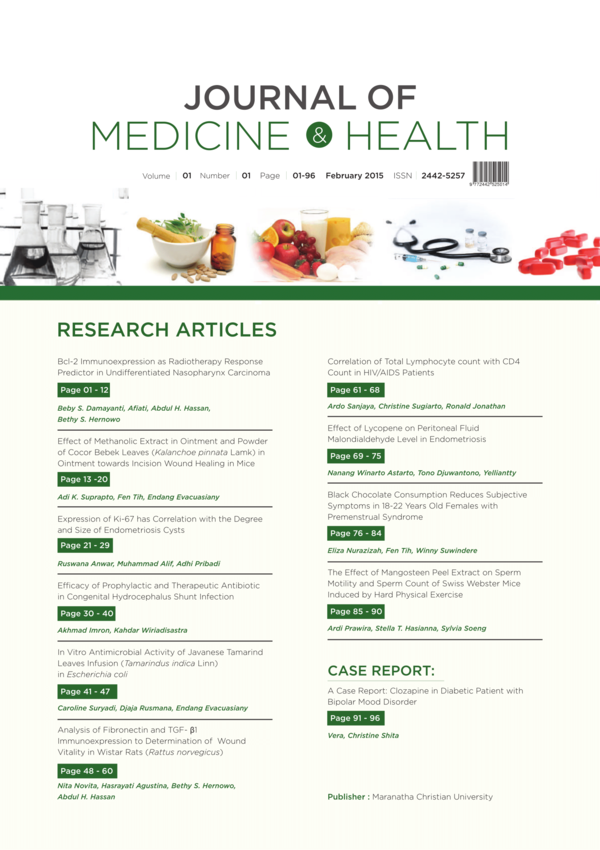Correlation of Total Lymphocyte Count with CD4 Count in HIV/AIDS Patients
DOI:
https://doi.org/10.28932/jmh.v1i1.500Abstract
HIV infection is a chronic infection of the immune system with a target of CD4 cells. Total lymphocyte count (TLC) can be done in resource-limited areas and are able to be used as a substitute to CD4 count. An increase in CD8 count can disturb the correlation between CD4 and TLC especially during the late clinical stage.Objective of this research is to find out the correlation of total lymphocyte count with CD4 count and to find out the influence of the clinical staging on the correlation of total lymphocyte count and CD4 count.This study is an observational, analytical and cross sectional study using the medical records of Klinik Teratai RSHS Bandung. The data is sorted according to the WHO clinical staging and are analyzed using Pearson’s correlation and Fisher’s transformation with α=0.05. The results showed that TLC have a correlation with CD4 count in all stadiums (r: 0,501-0,684, p<0,01). There is no significant difference of the correlation coefficients between the clinical stages (p>0.05). There is a correlation between TLC and CD4 count on HIV infected patients and there is no significant decrease of correlation of TLC and CD4 count on HIV infected patients with worsening of the WHO clinical stages. Keywords: CD4 count, total lymphocyte count, HIV/AIDSDownloads
Download data is not yet available.
Downloads
Published
2015-02-27
How to Cite
1.
Sanjaya A, Sugiarto C, Jonathan R. Correlation of Total Lymphocyte Count with CD4 Count in HIV/AIDS Patients. J. Med. Health [Internet]. 2015Feb.27 [cited 2025Dec.25];1(1). Available from: http://114.7.153.31/index.php/jmh/article/view/500
Issue
Section
Articles
License
Authors who publish with this journal agree to the following terms:
- Authors retain the copyright and grant the journal right of first publication with the work
simultaneously licensed under a Creative Commons Attribution-NonCommercial 4.0 International License that allows others to share the work with an acknowledgement of the work's authorship and initial publication in this journal. - Authors are able to enter into separate, additional contractual arrangements for the nonexclusive distribution of the journal's published version of the work (e.g., post it to an institutional repository or publish it in a book), with an acknowledgement of its initial publication in this journal.
 This work is licensed under a Creative Commons Attribution-NonCommercial 4.0 International License.
This work is licensed under a Creative Commons Attribution-NonCommercial 4.0 International License.

















